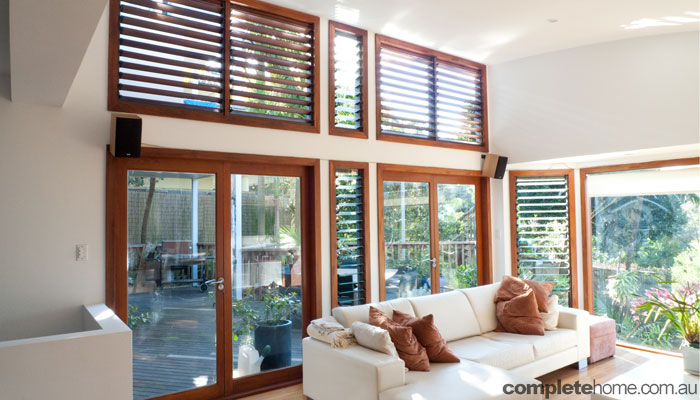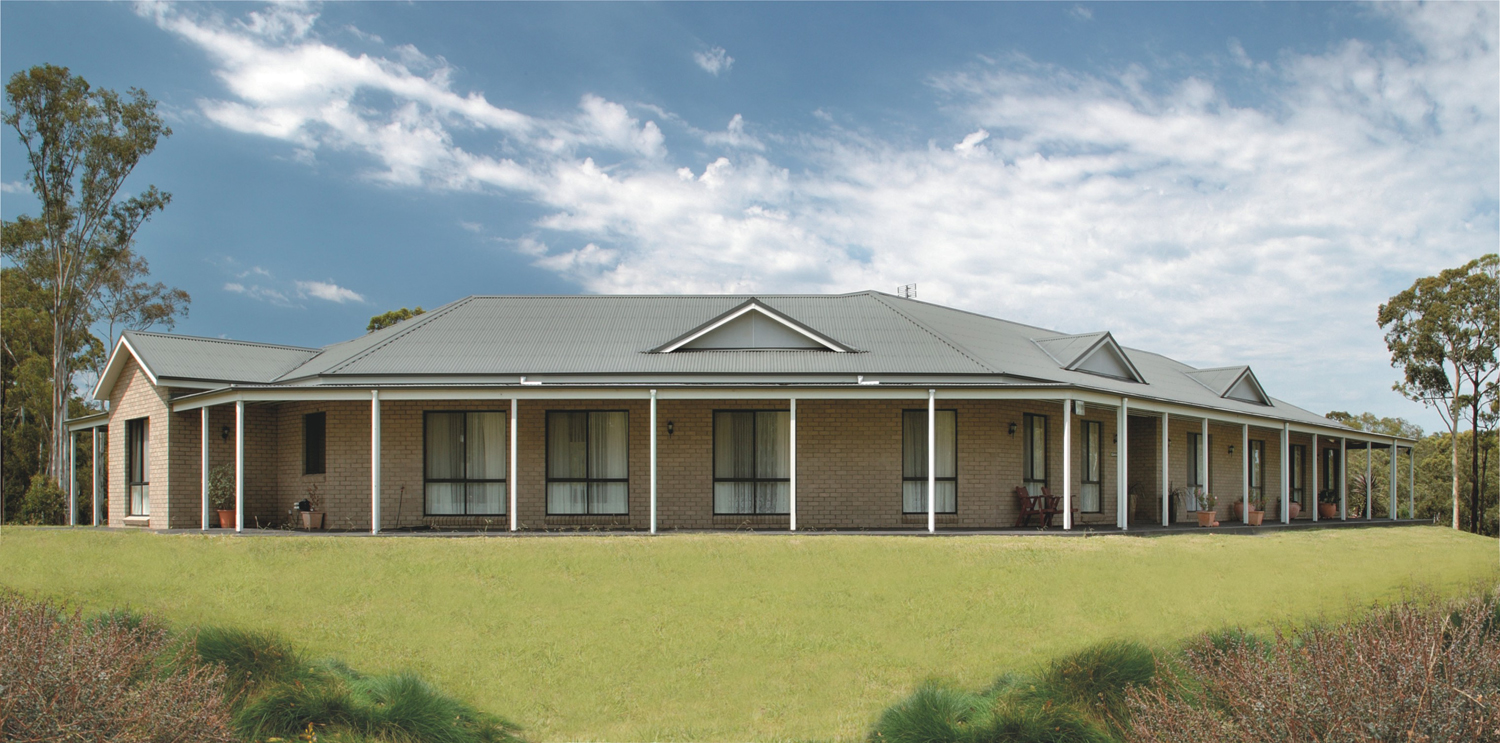Interior designer and sustainability expert Eminè Mehmet shares her advice on how to save money and create a better future by using recycled building materials.
By Eminè Mehmet, FDIA
Image: Beacon Hill Project – recycled timber window frames (Provided by Sue Connor Architects. www.sueconnor.com.au)
Recycling: I know it’s an unconventional way of building, particularly since we are so used to having everything brand new, but think about the benefits. Not only will you be saving money — there’s an incentive right there — but you’ll decrease your landfill contribution and new material use, resulting in a reduced carbon footprint.
If you’re still not convinced, consider the statistics: up to 40 per cent of waste sent to Australian landfill comes from building activities. Sadly, most of this waste can be reused and isn’t.
In 1997, Australia produced 98 million tonnes of new construction materials, most of which were used within Australia. That amounts to approximately 5200kg of building materials per person. That’s a lot of greenhouse gas emissions!
Instead of perpetuating this trend, why not step off the treadmill and reuse or recycle your building waste for more money in your pocket and the satisfaction that you’ve made a difference to the environment?
Does this sound too hard? All it takes is communicating your needs at the beginning of the project to your architect/designer and builder. Work with them to formulate a design and construction program based on smart design, reusing materials and a waste management plan.
Smart design refers to an assessment of your space requirements and how you intend to use your home. You can easily decrease materials required for your project by honestly and objectively assessing whether you really need three bathrooms. In the short term, you’ll reduce building costs and carbon emissions, increase your garden to allow for a vegetable patch and fruit trees as well as creating more space for the kids to play.
In the long term, your home maintenance needs will decrease and your energy bills will be lower as you use less energy to heat and cool your home.
Reusing materials in your new home will mean an inventory of current materials by your architect/designer prior to demolition with a view to incorporating them into the new design. This should be done at the very beginning of the project to save back-peddling when the design has already been finalised. This also enables your builder to plan for careful removal of materials earmarked for reuse.
A waste management plan takes into consideration the recycling of building waste that can’t be incorporated into your new design. It involves separating materials during demolition and construction and organising collection by appropriate recycling services.
If you’re really keen, you can list items online to sell or give away for free.
Another way to decrease landfill is to use materials with recycled content or source other pre-used materials. Again, having these specified by your architect/designer during the design phase will reduce expensive back-peddling. Be prepared to purchase pre-used materials as soon as they are sourced, otherwise you may miss out.
The good news is that most building materials can be recycled or reused. Below is a list to help you get started:
- Steel is the world’s most recyclable material and can be recycled numerous times. Most steel comprises 20 per cent recycled content.
- Aluminium is 100 per cent recyclable and easily reused on your project.
- Plasterboard can also be recycled quite easily. Plasterboard disposed of in landfill produces a toxic gas called hydrogen sulphide.
- Timber can be reused or sold. Using recycled timber on your project gives your home more character. You can reuse timber studs and timber flooring from your existing home.
- Concrete can be reused or recycled depending on its type. It can be converted into new concrete or used to line roads.
- Most glass can be recycled. Windows and frames can be reused on your project if planned for at the beginning of the design phase.
- Timber doorframes and window frames can be reused if your new home is designed to accommodate existing sizes and styles.
- Doors, door handles and doorstops can be removed and transferred to new homes and extensions.
- Carpet in good condition can be sold or reused. It can also be recycled into secondary carpets.
- Wall and floor tiles can be reused if carefully removed. Today, you can purchase tiles with recycled content made with sustainable manufacturing processes.
- Reuse existing cupboards and wardrobes. To give them a fresh look, keep the carcasses and use new doors or paint them to suit your new colour scheme.
- Light fittings can be incorporated into your new design.
- Bricks can be reused if removed with care or can be crushed for use as backfill, aggregate and gravel.
- Plastics from a building site include electrical wiring, PVC pipes and vinyl flooring. They can be recycled into new plastic-based products and materials.
- Power points and switch faceplates can be removed and reused or sent for reuse by others.
- Reuse fittings such as baths, toilets, basins, sinks and taps. They can also be sold for extra cash.
The possibilities for a more sustainable construction process are endless. The result is a home of character and personal style without the new-car smell and associated toxins that come with it. Plan carefully to allow additional time to make this shift from conventional to unconventional building practice. Take a leap of faith and know that in the background, your actions will have far-reaching effects beyond the end of your project.
Resources
Living Greener and Building Material Waste. livinggreener.gov.au/waste/building-material-waste
Buy, sell or offer building materials for free. salvagebazaar.com.au
Find sell or offer building materials. ecodirectory.com.au/index.php/salvaged-building-materials
Search for appropriate recycling facilities near you. recyclingnearyou.com.au
From Grand Designs Australia magazine Vol. 1 No. 2






